In this world, almost everything we do involves the internet. We shop, work, and even communicate online, which makes keeping our digital lives safe super important. But as technology gets better, so do the ways cybercriminals attack. From data theft to system breaches, we hear about online dangers almost every day. So, how do we stay safe? Alright, Artificial Intelligence (AI) steps in. AI isn’t just for automating things, it’s also becoming a key tool in fighting cyber threats.
In this article, we’ll see how AI is changing cybersecurity, the challenges we face, and what the future holds for this partnership. Let’s break it down into bite-sized pieces so it’s easy to understand!
The Big Problem: Cybersecurity Challenges
Cyber threats are a huge concern today. These threats can come in many forms, like malware, ransomware, and phishing attacks, and they aim to steal, damage, or misuse sensitive information. Here’s a quick breakdown of some common threats:

- Malware: Harmful software that can infect your computer, steal data, or damage your system.
- Ransomware: Locks your files and demands payment to get them back.
- Phishing: Tricks you into giving up personal info like passwords or credit card numbers.
As technology advances, these attacks are getting more sophisticated, often powered by AI. Hackers use AI to make these cyber threats smarter, sneakier, and harder to detect. It’s like playing a game of hide and seek, but the person hiding keeps learning your moves and changing their strategy.
Conventional Cybersecurity Solutions: The Basics
Before AI, cybersecurity relied on traditional tools like firewalls, antivirus software, and encryption. These tools were designed to protect our devices and networks from attacks. Here’s how some of them work:

- Firewalls: These are like the bouncers at a club, only letting in safe traffic and blocking the bad stuff.
- Antivirus Software: Think of this as a regular health check-up for your computer, scanning for harmful files and removing them.
- Encryption: This is the secret code that protects your data, so even if someone gets their hands on it, they can’t read it without the key.
While these tools are helpful, they’re not perfect. Hackers are always looking for loopholes, and sometimes these methods can’t keep up with evolving threats. That’s where AI comes in to give cybersecurity a much-needed boost.
How AI Helps Cybersecurity: A Smart Ally
AI is like having a super-smart assistant who learns from every experience and can spot threats faster than any human can. Here’s how AI is helping to improve cybersecurity:
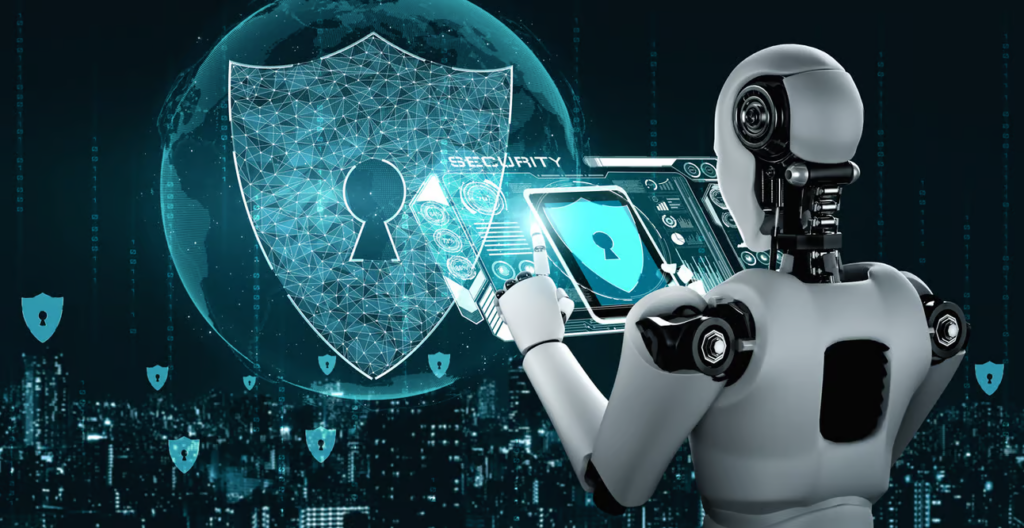
- Threat Detection: AI can scan huge amounts of data quickly, spotting suspicious activity that humans might miss. For example, if someone is trying to hack into your system, AI can notice unusual patterns and raise the alarm.
- Learning from Experience: Just like we learn from our mistakes, AI gets smarter over time. It uses machine learning to recognize new types of attacks and adapt to them. The more data AI processes, the better it gets at finding threats.
- Monitoring User Behavior: AI can watch how users normally behave and notice if something strange happens. Let’s say you always log in from your phone in New York, but suddenly there’s an attempt from another country—that’s a red flag that AI can catch quickly.
- Handling Repetitive Tasks: AI can take care of routine tasks like sorting through security alerts or updating system rules, freeing up human experts to focus on more complex issues.
It’s like having a super-efficient assistant who not only spots problems but also learns how to deal with them better each time.
AI’s Challenges in Cybersecurity: Not Always Perfect
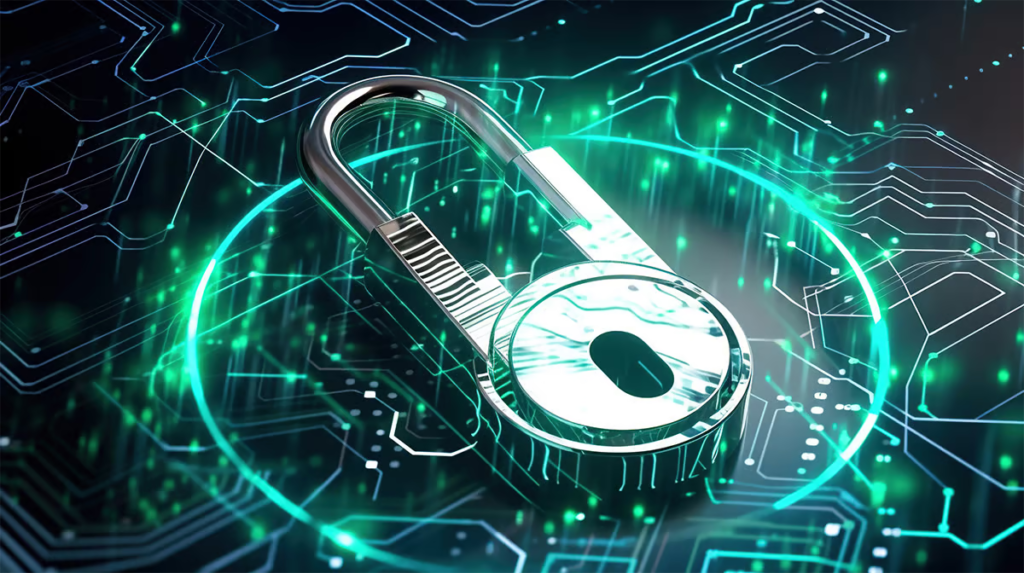
Even though AI is a powerful tool, it’s not without its challenges. Here are a few things to keep in mind:
- AI-Driven Attacks: While AI helps us fight cybercrime, it can also be used by the bad guys. Hackers are starting to use AI to make their attacks stronger and harder to detect. It’s like a double-edged sword: AI can work for us or against us.
- Needs Human Guidance: AI is smart, but it’s not as creative or unpredictable as humans. Cyber attackers can think outside the box, and AI might struggle to handle these unexpected strategies. This is why human oversight is essential—AI works best when paired with human expertise.
- False Positives: Sometimes AI can flag things as threats when they’re not, causing unnecessary alarms. It’s like a smoke detector going off because of burnt toast—it’s annoying, but better safe than sorry.
AI is helpful, but it still needs humans to guide it and make the final call on many decisions.
Recent Trends in AI and Cybersecurity: What’s Happening Now?
AI is becoming more common in cybersecurity, and several trends are shaping its future:
- Cognitive Technologies: More companies are using machine learning and deep learning to understand and respond to complex cyber threats in a smarter way.
- Smart Cities: As cities get more connected, AI is playing a big role in managing and securing data. Think of AI as the bodyguard for these digital cities, making sure everything runs smoothly and safely.
- Human-AI Collaboration: While AI is getting better at detecting threats, humans are still needed to guide it, interpret its findings, and make important decisions. This teamwork is essential for effective cybersecurity.
These trends show that AI is improving cybersecurity, but it’s the combination of AI and human skills that’s really making a difference.
Top AI Tools in Cybersecurity You Should Know
Here’s a quick look at some of the top AI tools helping to protect us online:
1. Fortinet: Offers powerful firewalls and comprehensive security solutions.

2. Symantec: Famous for its Norton antivirus, Symantec protects against a range of online threats.

3. Splunk: Specializes in analyzing large amounts of data to identify threats.
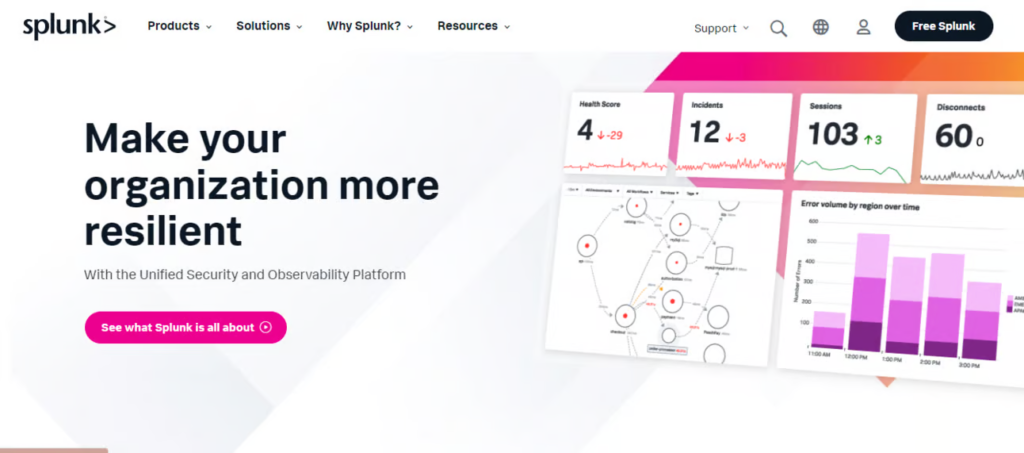
4. Crowdstrike: Uses AI to detect and respond to cyber threats in real time.

5. Tenable: Focuses on vulnerability scanning to find weak spots in your system.
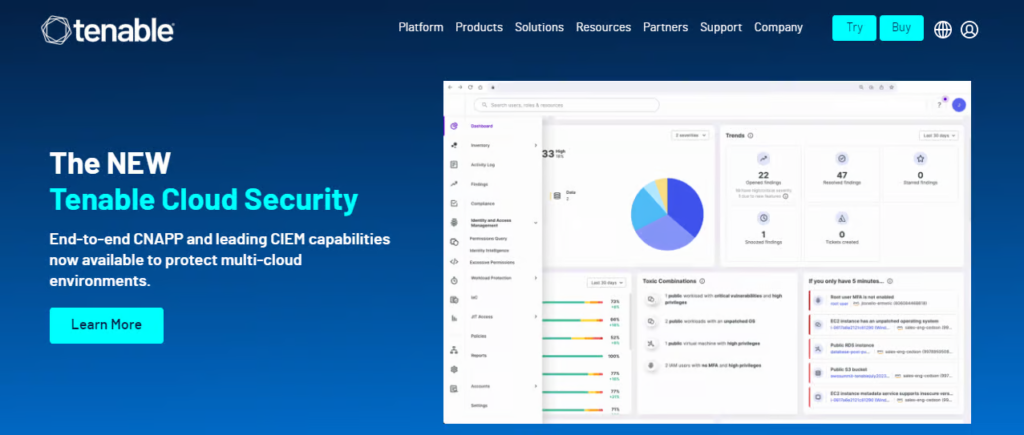
6. Trellix: Combines different security technologies for a smarter defense.
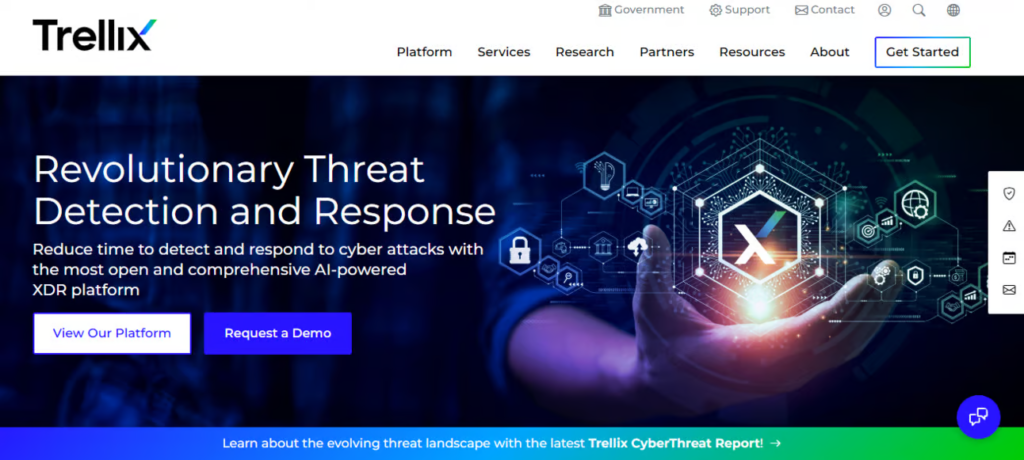
7. SentinelOne: Known for its real-time AI threat detection, making it a favorite in modern cybersecurity.
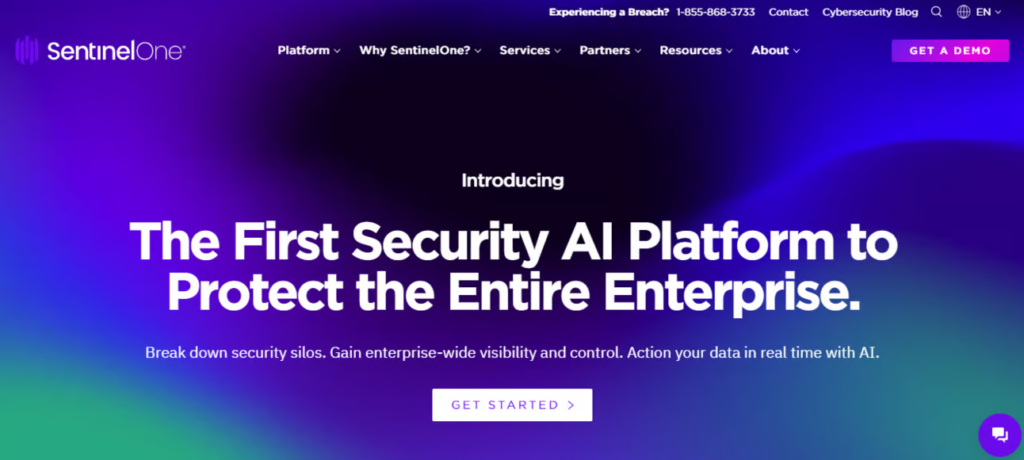
These tools are key players in the fight against cybercrime, using AI to keep us safe.
The Future of AI in Cybersecurity: What’s Next?
As AI continues to evolve, its role in cybersecurity will only get bigger. Here’s what we can expect in the future:
- Real-Time Threat Detection: AI will get even better at spotting cyber threats as they happen, allowing for faster responses and reducing potential damage.
- Adapting to New Threats: Cyber attacks are constantly changing, and AI’s ability to learn and evolve makes it a perfect fit for keeping up with these new challenges.
- Stronger Human-AI Collaboration: The future of cybersecurity will likely involve even more teamwork between AI and human experts. AI will handle the heavy lifting – scanning data and identifying patterns – while humans will step in to make key decisions and provide ethical guidance.
- Challenges Ahead: While AI offers many benefits, it also brings challenges. We need to ensure AI systems are used ethically, protect individual privacy, and stay ahead of AI-driven cyber attacks.
In short, the future of AI in cybersecurity looks bright, but it requires careful planning and continued collaboration between humans and machines.
AI and Cybersecurity – A Strong Team
In this article, we’ve explored how AI and cybersecurity work together to protect our digital world. AI helps by spotting threats faster, learning from new attacks, and even handling repetitive tasks. But it’s not a one-man show—humans still play a crucial role in guiding AI, interpreting its findings, and making sure it’s used the right way.
The combination of AI’s speed and intelligence with human creativity and oversight is what makes cybersecurity stronger than ever. Together, they form a team that’s keeping our online world safe and secure.
As we move forward, this partnership will continue to grow, making sure that as cyber threats evolve, so do the solutions that protect us.
Now that we know how AI and cybersecurity are shaping the future, it’s exciting to see what comes next!
